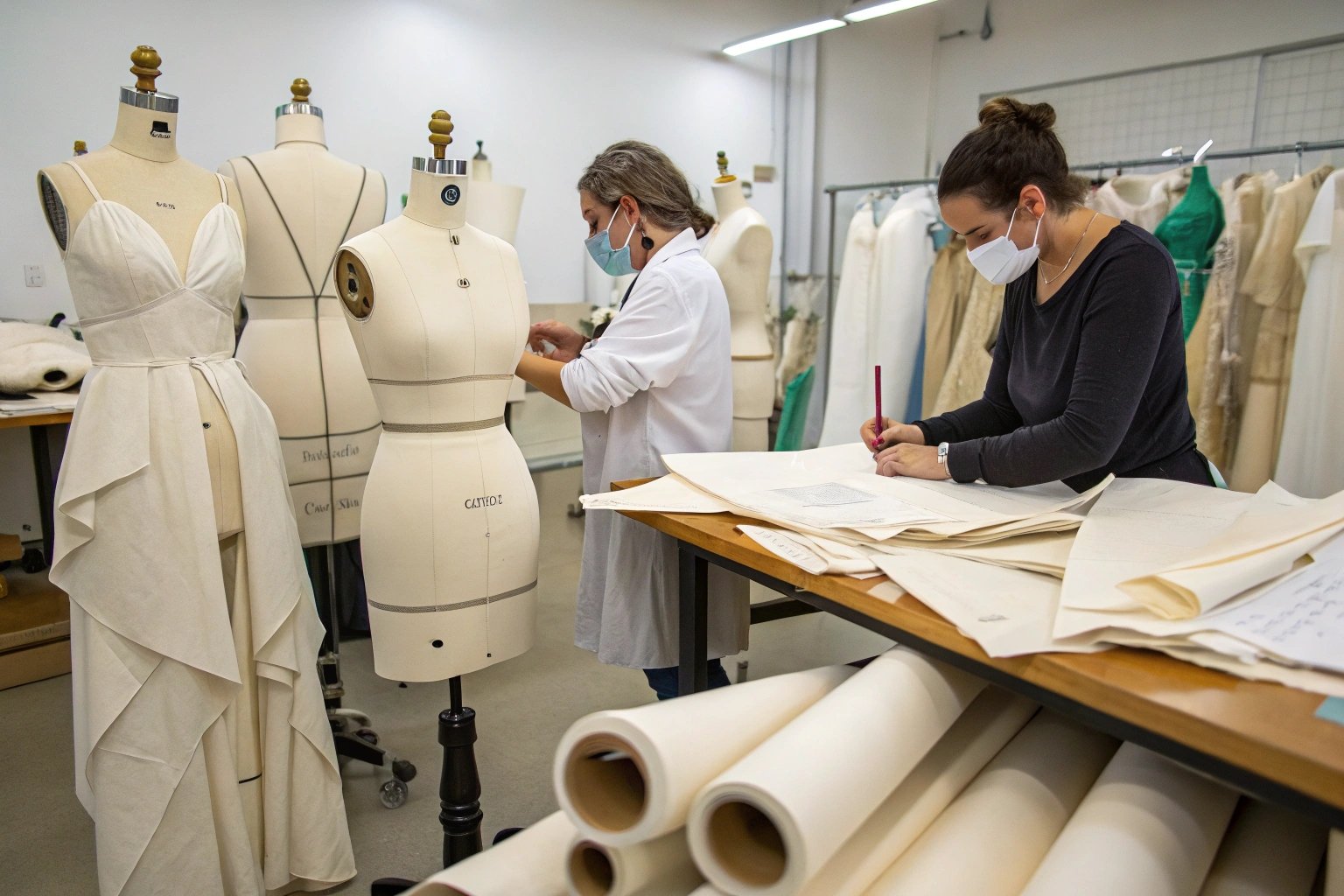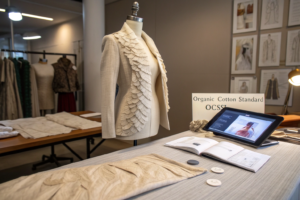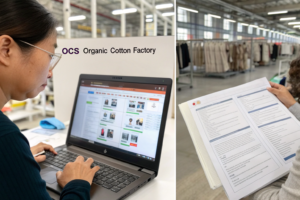When you choose a fabric for a garment, you're not just picking color or fiber—you’re choosing how the fabric moves. That quality, known as drape, directly influences the look, fit, and construction of your pattern. A stiff cotton canvas won't flow like a silk charmeuse, and your pattern must reflect that difference—or the final garment may not work at all.
Fabric drape affects how a garment hangs, flows, and interacts with the body, and directly determines pattern modifications such as dart depth, ease, pleat behavior, and seam shaping.
If you overlook drape, even the most beautiful fabric can turn into a poorly fitted, stiff, or sagging garment. But once you understand how to pair drape with your pattern, you unlock a whole new level of control in both aesthetics and performance.
What Is Fabric Drape and How Is It Measured?
Drape isn’t a guess—it can be analyzed and even measured to help you plan better.
Fabric drape refers to how a textile falls or hangs under its own weight and is affected by fiber type, yarn structure, weave/knit construction, and finishing.
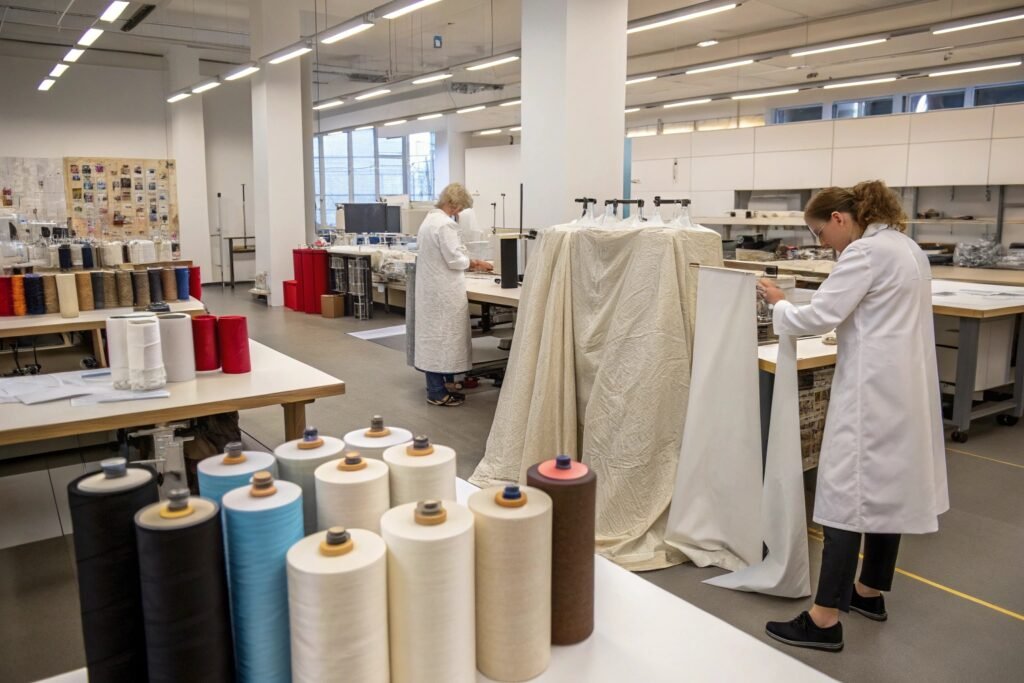
How Do You Measure Fabric Drape?
One industry-standard way to measure drape is the drape coefficient test, where fabric is placed over a pedestal, and the shadow cast by the hanging portion is measured. A higher coefficient indicates a stiffer fabric; a lower one, more fluidity.
Other tests include manual draping over a mannequin or using digital tools in CAD systems like Optitex or CLO3D. These systems simulate drape based on fabric weight and tension properties, helping patternmakers visualize outcomes before cutting.
Which Fabrics Have High vs. Low Drape?
| Fabric Type | Drape Behavior |
|---|---|
| Silk Charmeuse | Fluid, flowing |
| Cotton Poplin | Medium, soft |
| Linen | Crisp, moderate |
| Canvas | Rigid, stiff |
| Rayon | Soft, clingy |
| Tulle | Voluminous, airy |
When sourcing from fabric suppliers, ask about GSM, fiber blend, and any finishing (e.g., silicone wash or starch) that may affect drape behavior.
How Does Drape Influence Pattern Adjustments?
Drape isn’t just about fabric—it changes how you draft your pattern from the start.
Fabric with more drape needs different pattern allowances, pleat depths, hemline behavior, and dart placement compared to stiffer fabrics.
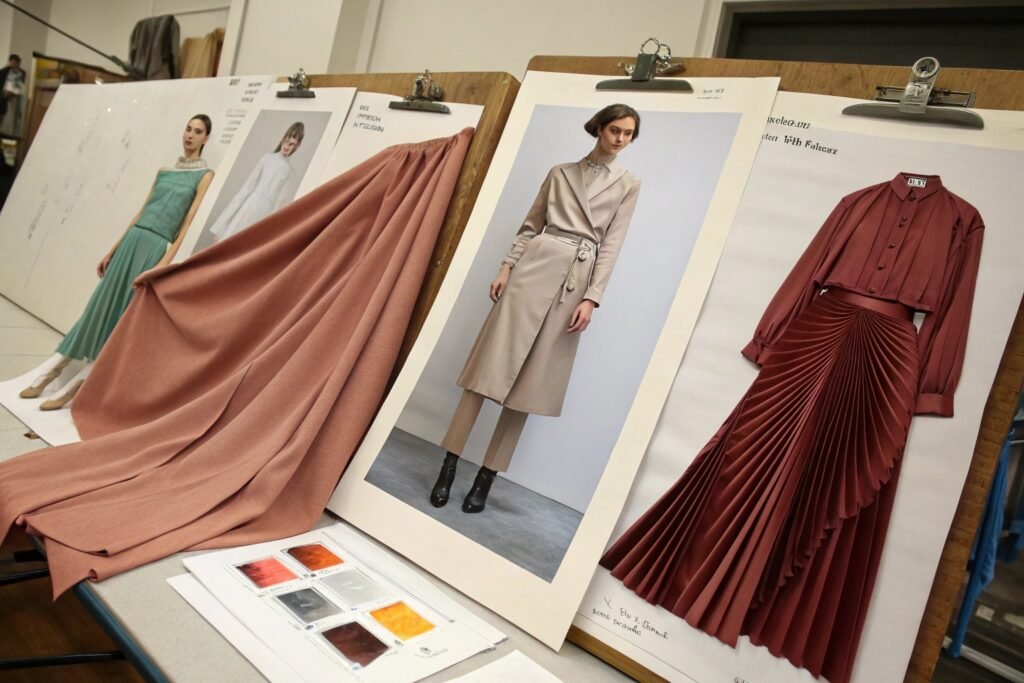
Do You Need to Change the Pattern for Drape?
Absolutely. Using a fabric with excessive drape on a structured pattern (like a blazer) results in sagging seams and collapsed silhouettes. On the flip side, a stiff fabric used on a pattern meant for flowy movement (like a bias-cut dress) may feel restrictive or boxy.
Patternmakers often increase ease and reshape darts for drapier fabrics to allow them to skim the body attractively. For example, princess seams might be more curved, or hems might be lengthened to avoid excessive flair.
What Happens to Garment Details?
With high-drape fabrics, pleats may collapse rather than stand out. Ruffles may lose volume. On the contrary, structured fabrics will hold pleats, seams, and sharp corners well.
When planning, you need to decide: do you want your design to follow the drape, or fight it with interfacing, topstitching, or lining? This is where fabric and pattern must match each other’s energy.
Which Garment Styles Suit Different Drape Levels?
Understanding drape allows you to match the right garment design to the fabric.
Garment types that benefit from drape include bias-cut dresses, wrap tops, full-circle skirts, or cowl-neck blouses, while stiffer fabrics shine in jackets, pants, and crisp shirts.
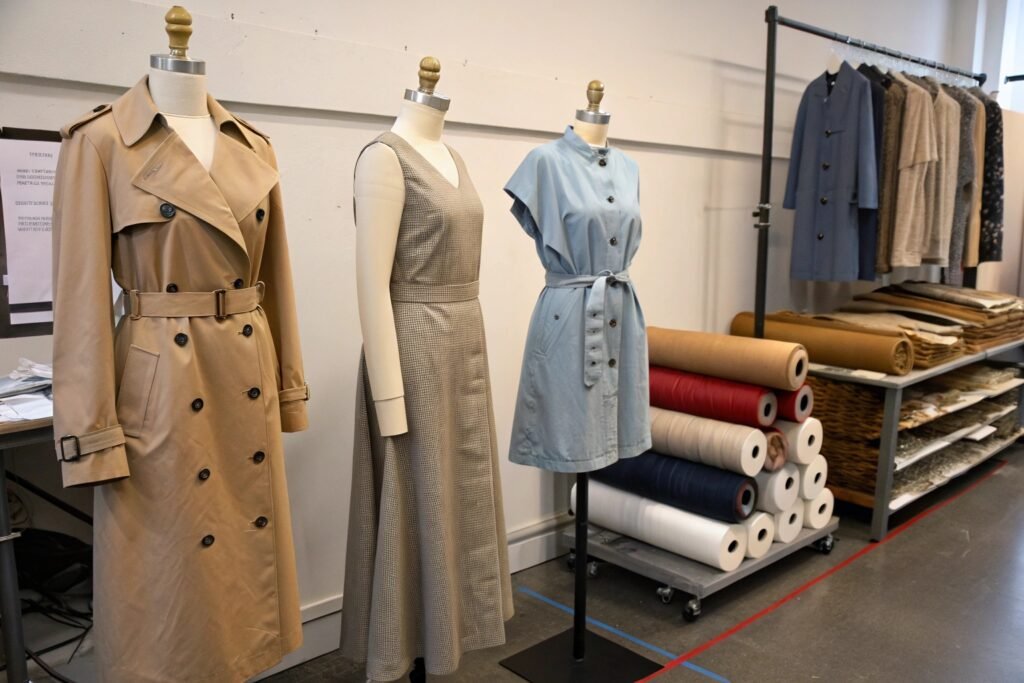
What Styles Work Best with Flowy Fabrics?
Fabrics like rayon, silk, or modal are perfect for garments meant to move and hug the body. Think draped tops, Grecian dresses, wide-leg lounge pants, or lingerie. Drapey fabrics can create elegant folds and visual softness.
Explore this sewing pattern guide to see how different patterns perform with specific fabrics. Many modern indie designers now include drape level suggestions in their instructions.
What Garments Suit Structured Drape?
Fabrics with minimal drape—like twill, denim, or canvas—are great for tailored clothing. Trench coats, trousers, pencil skirts, and button-downs rely on stable shapes. A stiffer drape can highlight construction and structure, especially in menswear and uniforms.
Keep in mind that accessories like belts, buckles, or interfacing may compensate for drape differences in certain areas like collars and waistbands.
How to Test Fabric Drape Before Finalizing Patterns?
Before you commit to mass cutting, test your fabric for real.
The best way to preview drape’s impact is to create fabric mock-ups, mini drapes, or even virtual samples using 3D software and physical swatches.

Should You Always Make a Muslin?
Ideally yes. Even using cheaper fabric like muslin or non-woven interfacing for testing can reveal if your seams pucker, hems sag, or the fabric swallows your design.
You don’t need to sew the entire garment—just test crucial areas: sleeves, collar, hip curves. Draping directly on a dress form helps visualize how folds fall. Use pins and chalk to tweak darts and fullness in real time.
Can You Use 3D CAD Tools for Drape Simulation?
Absolutely. Modern tools like Browzwear or CLO3D simulate fabric properties with impressive realism. If you know your GSM, stiffness, and elasticity, you can preview how the fabric moves with your exact pattern.
These tools are game-changers for reducing waste, especially when working with expensive or limited yardage fabrics like organic cotton or silk blends.
Conclusion
Drape is more than just a style feature—it’s a fundamental element that shapes how your garment fits, moves, and feels. Whether you’re drafting from scratch or adjusting an existing pattern, always consider the drape behavior of your chosen fabric.
At Fumao Fabric, we help brands not only source the perfect textile but also understand how it behaves. We offer QR-coded lab test reports for drape, shrinkage, GSM, and elasticity—so your design vision meets technical precision. When pattern meets drape correctly, your garments don’t just fit—they flow.

